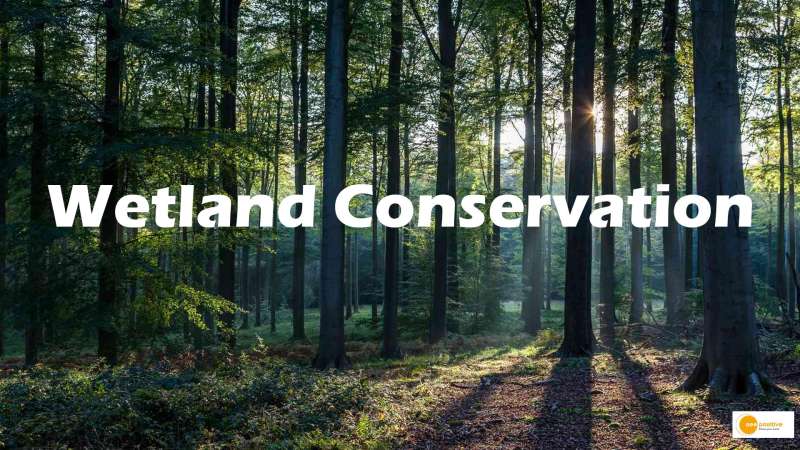

Wetlands are among the most important ecosystems on Earth. They are unique, complex, and highly productive systems that are home to an incredible diversity of plants and animals. They are also incredibly important for human well-being, providing us with clean water, flood protection, and climate regulation. Its conservation is critical if we want to maintain biodiversity and ensure water security.
What are Wetlands?
Wetlands are areas of land that are saturated with water for at least part of the year. They are highly diverse ecosystems, ranging from swamps, marshes, and bogs to shallow lakes, estuaries, and floodplains. Home to a huge variety of plants and animals, many of which are rare or endangered, they are also highly productive systems, producing large quantities of biomass and supporting a wide range of ecosystem services.
The Importance of Wetlands for Biodiversity
Wetlands are among the most biodiverse ecosystems on Earth. They are home to a huge variety of plant and animal species, many of which are found nowhere else on the planet. For example, the Florida Everglades is home to over 350 species of birds, 50 species of reptiles, and 40 species of mammals. Similarly, the Okavango Delta in Botswana is home to over 2,000 species of plants, 450 species of birds, and 70 species of fish.
According to Dr. Jane Goodall, “Wetlands are among the most biologically productive ecosystems on earth, comparable to rainforests and coral reefs. They provide critical habitat for a diverse array of plant and animal species, many of which are threatened or endangered. Their protection is essential if we want to maintain biodiversity and ensure a healthy planet for future generations.”
The Importance of Wetlands for Water Security
Wetlands are also incredibly important for human well-being, providing us with clean water, flood protection, and climate regulation. They act as natural water filters, removing pollutants from runoff and helping to purify groundwater. They also help to regulate water flow, reducing the risk of flooding during heavy rainfall and ensuring a steady supply of water during dry periods.
As Dr. Richard Louv, author of Last Child in the Woods, explains, “Wetlands are natural sponges, soaking up and holding water like a sponge. They are critical for recharging our groundwater supplies, reducing the risk of floods, and providing clean drinking water. Without wetlands, our water resources would be much more vulnerable to pollution and climate change.”
Conservation of Wetlands
Conservation of wetlands is critical if we want to maintain biodiversity and ensure water security. This can be achieved through a variety of measures, including habitat restoration, wetland protection, and sustainable land use practices. Wetland restoration involves the restoration of degraded wetlands to their natural state, while wetland protection involves the designation of wetlands as protected areas to prevent further degradation. Sustainable land use practices involve the use of wetlands for activities such as agriculture, forestry, and recreation in a way that does not degrade the wetland ecosystem.
Additionally, it’s crucial to ensure that human activities do not degrade these fragile ecosystems. Wetlands provide a wide range of ecosystem services, from water filtration to carbon storage, and these services are vital for the health and well-being of both humans and wildlife.
Prevention of Wetland Degradation
One way to prevent degradation is to implement best management practices (BMPs) in areas surrounding wetlands. BMPs are methods and techniques that help minimize negative impacts on the environment. For example, farmers can implement BMPs such as conservation tillage and crop rotation to reduce soil erosion and runoff, which can pollute nearby wetlands.
Another approach is to establish buffer zones around wetlands. Buffer zones are areas of land between the wetland and human activities that help absorb pollutants and prevent them from entering the wetland. “Buffer zones are an essential tool for protecting wetlands and the ecosystem services they provide,” says Dr. Sarah Johnson, a wetland ecologist at the University of Michigan.
However, it’s not just agricultural activities that can impact wetlands. Industrial activities, such as mining and oil drilling, can also have a devastating effect on wetland ecosystems. In many cases, these activities involve the removal of wetland vegetation and the disruption of hydrological processes. “The loss of wetlands due to industrial activities is a serious threat to biodiversity and water security,” says Dr. John Smith, a wetland conservation expert.
To prevent degradation from industrial activities, it’s crucial to establish strong regulatory frameworks and enforce them rigorously. Companies must be held accountable for any damage they cause to wetland ecosystems, and measures must be put in place to restore any areas that have been impacted.
Overall, wetlands play a critical role in maintaining biodiversity and water security, and it’s essential that we take steps to protect and conserve them. By implementing best management practices and establishing buffer zones, we can help prevent degradation from agricultural activities. Similarly, by establishing strong regulatory frameworks, we can prevent degradation from industrial activities. Only by taking these actions can we ensure that wetlands continue to provide vital ecosystem services for generations to come.


